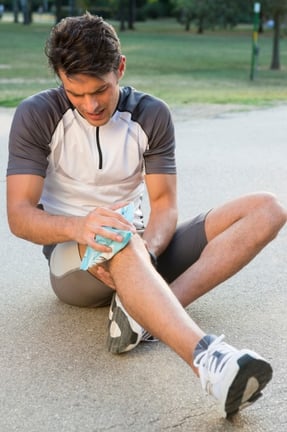 Whether you are traveling for business or for pleasure, it typically means you eat most meals out or on the go. It can be challenging to make the most balanced choices and keep your eating on the right track. You want to try foods that are special to that region, you are busy and grabbing the first thing that sounds good, and you don’t have access to a grocery store for more fresh foods; these can all be challenges while traveling.
Whether you are traveling for business or for pleasure, it typically means you eat most meals out or on the go. It can be challenging to make the most balanced choices and keep your eating on the right track. You want to try foods that are special to that region, you are busy and grabbing the first thing that sounds good, and you don’t have access to a grocery store for more fresh foods; these can all be challenges while traveling.
Tips for Healthy Eating on Vacation
Following these tips will help you enjoy your food choices and not derail all of your hard work!
- Drink plenty of good-for-you fluid. This includes water, tea, decaf coffee, 100% juice, and milk. Staying hydrated will help to keep your metabolism working efficiently, flush out the sodium from restaurant meals, and keep you hydrated when traveling can zap that from you.
- If you are splurging, keep it to one per meal. There is nothing wrong with trying foods that you might only get on vacation. However, if every meal is a splurge without any of the good-for-you foods that your body requires, this can be a problem! Allow yourself the ice cream cone, but one scoop will do! Enjoy the bacon cheeseburger, but pair it with a side salad. Always try to scour the menu and choose the one thing you really want and then balance your plate to fit the 3-food-group-per-meal rule.
- Pack snacks from home. This can help keep you satisfied between meals so you are more in control when sitting down to a meal. Make sure to eat every 3 to 5 hours and choose snacks that have fiber and/or protein to help keep you full. Easy and portable snacks to pack include nuts, trail mix, fresh or dried fruit, snack-size protein bars, and peanut butter sandwiches.
Plan Ahead for Better Nutrition While Traveling
Here are some final tips to keep in mind while traveling:
- Request a refrigerator in your room to keep healthy perishable snacks and meals.
- Bring a water bottle with you to fill up at rest stops or after security at the airport.
- Keep alcohol in moderation.
- Avoid minibars in hotel rooms.
- Visit the local grocery store once you’ve arrived at your destination. Stock up on healthy snacks and convenient meals. (This is better for your budget, too!)
- Research menus ahead of time.
However, the most important tip is everything in moderation! Enjoy your travels, try something new, and get out there and explore the new city!
This blog was written by Angie Scheetz, RD, Wellness Coordinator. To find out more about the NIFS bloggers, click here.


 If you have spent any amount of time in the gym lately, I am sure you have seen a lot of people using exercise bands for part of their workout. When looking at a flimsy, thin exercise band, many would think, “Okay, what type of workout will that even give me?” Studies have shown that workouts using exercise bands will increase muscle strength and size while helping decrease fat, similar to using free weights.
If you have spent any amount of time in the gym lately, I am sure you have seen a lot of people using exercise bands for part of their workout. When looking at a flimsy, thin exercise band, many would think, “Okay, what type of workout will that even give me?” Studies have shown that workouts using exercise bands will increase muscle strength and size while helping decrease fat, similar to using free weights. 

 I consider myself a
I consider myself a 

 This is always a hot topic and a debate that many people have strong opinions about: should I be buying organic produce? Unfortunately, I don’t have the definite answer for you, either. What I can do is give you some facts and let you decide whether buying organic foods is right for you and your family.
This is always a hot topic and a debate that many people have strong opinions about: should I be buying organic produce? Unfortunately, I don’t have the definite answer for you, either. What I can do is give you some facts and let you decide whether buying organic foods is right for you and your family. You have heard it over and over again: If you are not swimming, you are missing out on a great low-impact, total-body workout. If you were sore from beating yourself up from running on the roads or lifting earlier in the week, you will find yourself feeling much better after a good swim.
You have heard it over and over again: If you are not swimming, you are missing out on a great low-impact, total-body workout. If you were sore from beating yourself up from running on the roads or lifting earlier in the week, you will find yourself feeling much better after a good swim.  One of the most important elements of performance and exercise is rest, and it’s also one of the hardest things to do! According to
One of the most important elements of performance and exercise is rest, and it’s also one of the hardest things to do! According to